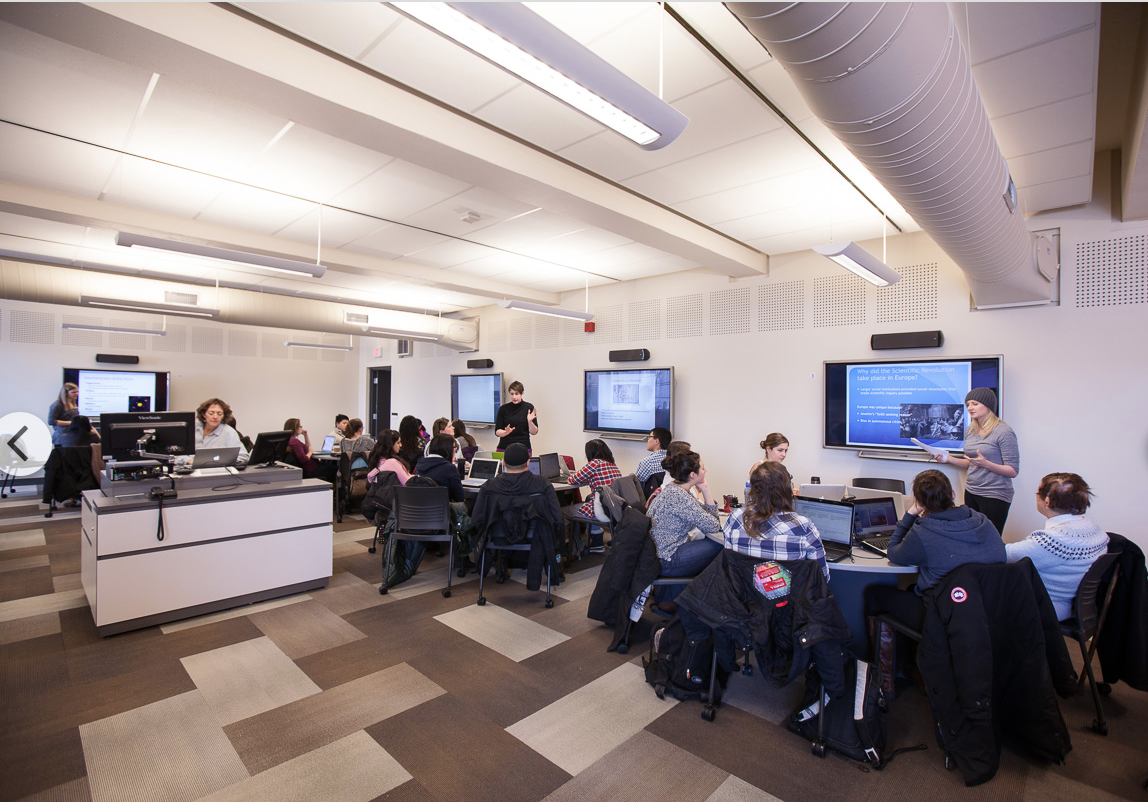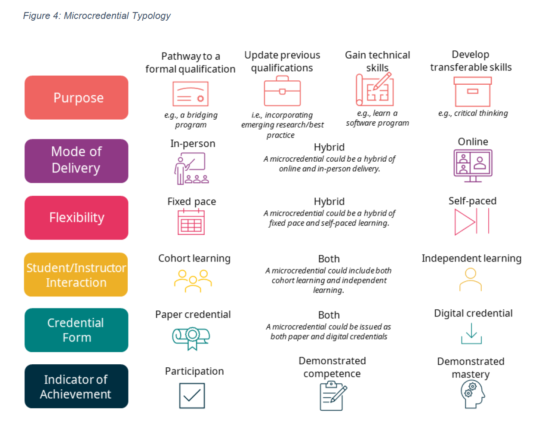
Bates, T. (2023) My five wishes for online learning in 2023, Teachonline.ca January 3.
I was asked by Contact North to lay out my five wishes for online learning in 2023. Note these are wishes, not predictions. Indeed, I am not particularly optimistic that any of them will be fulfilled. So as well as repeating here my wishes in the Contact North article, I’m also adding (in italics) the reasons I am not expecting the wishes to be granted. Indeed, this may be my real wish: to see some radical change in how we work together across Canada to provide better services for students.
MY FIVE WISHES FOR ONLINE LEARNING IN 2023
Dr. Tony Bates
Research Associate
Contact North | Contact Nord
It’s that time of year to look forward to what a new year might bring, especially in the world of online learning.
I have several personal wishes for 2023, such as an end to the war in the Ukraine, no more pandemics, and having the same number of teeth at the end of the year as at the beginning.
But let’s focus on teaching and learning in higher education in 2023.
Wish No. 1: A new space plan for institutions based on hybrid learning

If the future is hybrid, we need institutions that can leverage the advantages of both online and in-person teaching. Churchill said, “We shape our buildings and afterwards our buildings shape us.” We need buildings that reflect the nature of hybrid learning. We already have models, such as Queen’s University’s active classrooms that combine classroom space with digital access, enabling students to share their online work in class.
If students are doing, for example, half their studies online, this will mean a reduction in demand for traditional classroom space such as large lecture theatres, and widespread access to online learning both on- and off-campus. We have seen several colleges and universities risk severe financial difficulties to create new buildings. Could not some of this capital expenditure be used to make better use of existing buildings, such as new interactive classrooms?
Or could we increase the number of institutions that are more virtual than campus-based, and use the unspent capital funds on smaller classes or more training for instructors in how to teach in a hybrid mode? For all institutions, a lighter physical foot-print would not only be more cost-effective but would have environmental benefits as well.
Success in the future will depend as much on making learning as accessible as possible — and long-distance commuting and buildings empty for many hours a day don’t reflect what the future is likely to be. So let’s rethink our campus spaces to reflect a more digital world.
The problem: The main problem is the legacy investment in traditional teaching spaces. The sheer size and physical presence of a large university in itself gives status to the organisation. Politicians and university and college presidents love to be seen cutting ribbons. A new building is a sign of confidence in the institution. Furthermore, buildings are a capital expense; moving towards more virtual learning is mainly an operational expense. There are accounting barriers to moving money between these different kinds of budget. Nevertheless, of my five wishes I think this is the most likely to make progress in 2023. The pandemic has shifted the mindset to some extent.
Wish No. 2: A national certification program for higher education instructors

The major barrier to greater use of online learning is the willingness of some faculty and instructors to change their teaching methods. Emergency remote learning, as a result of the pandemic, clearly indicated that moving lectures online is a poor way to teach and resulted in a great deal of dissatisfaction among instructors and students. Research and experience over 30 years prior to COVID-19 identified best practices and designs for online learning, but these were largely unknown or ignored by most instructors in the rush to move courses online in March 2020.
This was less an issue when only 10 per cent of all enrolments were within fully online classes. Instructors working with instructional designers usually ensured that best practices were followed. But as we move more and more into hybrid learning, this team model can’t easily be scaled up to the remaining 90 per cent of instructors.
In Canada, instructors who are typically hired for their subject expertise aren’t necessarily flocking to faculty development workshops.
Yet the issue of teaching competence in higher education is a very serious matter. The UK Professional Standards Framework (PSF)(link is external), for example, is a comprehensive set of standards and guidelines for everyone involved in teaching and supporting learning in higher education. The PSF has accredited teaching development programs in more than 125 institutions around the world, while more than 150,000 staff in 100+ countries have had their individual teaching practice recognized through their fellowship scheme. The Netherlands has a University Teaching Qualification(link is external) that provides evidence of the teaching skills of lecturers in academic education. Either of these programs could easily be adopted here in Canada.
The problem. As urgently as this is needed, it’s not going to happen here in Canada. First, the academic unions will block it. It will threaten the hierarchical pecking order of research over teaching and will be seen (incorrectly) as impinging on academic freedom. It will also be seen as being too costly (as the benefits unfortunately will not be measured in financial terms). Secondly, this is Canada: the provinces are responsible for higher education. We don’t even recognise medical qualifications across provincial boundaries. Getting all 13 provinces and territories to agree on common standards or criteria will be impossible. Nevertheless, it might be possible for one major province to break ranks on this, but I would put the odds of this happening in Canada in 2023 below 5%. However, smaller, more focused, initiatives, such as BCIT’s Polytechnic Academy, are encouraging signs.
Wish No. 3: National standards for micro-credentials

Micro-credentials are becoming increasingly important. They meet a real need for short, specific qualifications that can be taken to an employer as proof of a specific competency or area of knowledge. These will become increasingly important as the labour market becomes more mobile.
However, to be useful, they must be transparent (you know what the student has learned and at what level) and portable (the credential will be recognized by institutions and employers). Ontario is one of the few provinces that has a working micro-credential framework(link is external), but it only applies within Ontario. Nor are most micro-credentials in Canada “stackable”, in that they can be added together to make a larger qualification such as a diploma or degree.
In Canada, there is a lot of inter-provincial movement of people seeking jobs. Without national standards for micro-credentials, the potential for increased labour mobility is lost. Developing standards, such as level and length of study, is indeed possible. There are agencies such as the British Columbia Council on Admissions and Transfer(link is external) and the Ontario Council on Articulation and Transfer(link is external) (ONCAT), that do it all the time. But for micro-credentials they need to be workable across provinces, which is why we need national standards.
The problem: First, see Wish No. 2 for the difficulties of provinces working together in Canada. However, this is not as intractable as professional development. Politicians are interested in micro-credentials and want to see them working as a way to encourage re-training and skills development. Again, the problem lies more in the lack of discipline in the institutions offering micro-credentials. We need commonly agreed definitions. This is not an insuperable problem. It needs the appropriate provincial organisations and the institutions to get together and agree on the labelling and the transferability of microcredentials. I think in 2023 there is a 50% chance of this happening in 50% of the provinces, although inter-provincial agreement I would put at a probability of 25%.
Wish No. 4: Sector-wide multi-media open educational resources

Several provinces now have excellent provision of open textbooks. In British Columbia, all university courses at the first- and second-year level and most community college courses have at least one open, online textbook peer reviewed by instructors in the province. This means students don’t have to spent $1,000+ a year on textbooks.
However, the potential of open educational resources has hardly been touched. The real promise lies in multi-media resources such as simulations, serious games, and augmented and virtual reality. These are more difficult to develop than open textbooks, and they need highly skilled multi-media teams to produce. However, once produced, they could be shared across the country.
Many subject areas have common “difficult” topics or topics that need scarce or expensive equipment to operate. Simulations or virtual reality can allow students to practice such skills in a digital environment. Many of these topics or skills are taught in various institutions, so well-produced, nationally accredited resources could be shared with many others. But this requires some federal funding linked to a quality assurance process; one way would be through organizations such as Colleges and Institutes Canada(link is external) and/or Universities Canada(link is external).
Federal funding focused on sectoral skills development could be allocated to these organizations, which would accept multi-institutional funding proposals with the condition that the materials be openly licensed. This would allow for a team approach to developing quality multi-media materials. An alternative could be joint provincial projects between, say, British Columbia and Ontario, which are both large enough to ensure widespread applications across their provinces and for use anywhere in Canada. Collaboration and co-operation, though, will be essential. The advantage of federal funding is that it could ensure materials were available in French as well as English.
Problem Again, this needs inter-provincial collaboration and also collaboration with the Federal government. But I am more optimistic in this area, because it has already started, to some extent. The open textbook project has already spread to several provinces so there are connections already in place. The Federal government is interested in promoting ’21st century’ skills development, and the benefits of sharing costs are pretty obvious. The main barrier will be getting instructors from different institutions in different provinces to see the benefit of working together and sharing materials. Some incentives – such as release time – could help. I would put this as perhaps a 50% chance of happening in 2023.
Wish No. 5: A national program for research and development in online learning
The future may be hybrid, but there is much to learn about what works and what doesn’t when mixing in-person and online learning. What are the strengths and weaknesses of each, in specific subject or topic areas? What guidelines or best practices can we suggest to instructors?
Back in 1995, the National Centres of Excellence program in TeleLearning(link is external) brought together researchers from across the country to spearhead research in technology-based learning applications, and to train students, transfer knowledge and technology, and inform practice and policy development in schools, higher education institutions and workplaces. It was probably a program before its time, and likely too focused on academic research and commercial development.
However, we are entering another major shift in teaching and learning in higher education that warrants such a national exercise and one that takes into account the lessons of NCE-TeleLearning. We need a wide-ranging and comprehensive set of activities that cover both research and development. And in 2022, we have much better infrastructure for ensuring success in such a project.
The Canadian Digital Learning Research Association(link is external) is now in place and has conducted national surveys in higher education across Canada. OTESSA(link is external) is a recent development bringing together Canadian academic researchers in online learning. And Contact North | Contact North has developed more than 200 case studies of innovation through its Pockets of Innovation project.
We need both quantitative and qualitative studies. We need to know what instructors and institutions are actually doing with online learning. How is hybrid learning developing? What does it look like, both on the ground and at a provincial and national level? What are the key challenges — and solutions — as instructors and institutions lean into hybrid and online learning? What guidelines and best practices are emerging for instructors? What are the key policy issues for institutions? What must governments do to ensure quality and innovation?
It’s time for another national effort that recognizes the importance of online learning in Canada, and time for money to be put toward identifying the essentials.
Problem: The first problem is the 1995 NCE-Telelearning project. It was such a disaster that few would want to repeat the mistakes made on that project. The second problem is the way research is funded in Canada. The obvious place to go would be the Social Sciences and Humanities Research Council, but this is run by academics and funding tends to go to the traditional academic disciplines, not to cross-disciplinary studies. The CDLRA has shown how difficult it is to raise money for essential research that does not fit the traditional research funding agencies. Nevertheless, CDLRA, OTESSA and CNIE have the potential to put together a convincing funding proposal in the area of $2-$10 million for this kind of research, especially if it was broken down into a set of smaller and more focused research projects. However, I would give the odds of such a project succeeding in 2023 at less than 33%.
The need for cross-provincial collaboration and co-operation
Higher education is a provincial responsibility in Canada, but the system as a whole is facing similar challenges with regard to online learning. Collaboration and co-operation between the provinces will benefit everyone. There is certainly an arms-length role here for the Federal government also since online learning is directly connected to economic development.
The pandemic showed that Canada has a very agile and flexible higher education system when push comes to shove. We need to continue to do more pushing and shoving to ensure students get quality online and hybrid learning opportunities. I believe my five wishes could contribute to this during 2023. What do you think?









 Dr. Tony Bates is the author of eleven books in the field of online learning and distance education. He has provided consulting services specializing in training in the planning and management of online learning and distance education, working with over 40 organizations in 25 countries. Tony is a Research Associate with Contact North | Contact Nord, Ontario’s Distance Education & Training Network.
Dr. Tony Bates is the author of eleven books in the field of online learning and distance education. He has provided consulting services specializing in training in the planning and management of online learning and distance education, working with over 40 organizations in 25 countries. Tony is a Research Associate with Contact North | Contact Nord, Ontario’s Distance Education & Training Network.


Thanx very much for this wish list, which I found most interesting.
My main point for commenting is to note that Figure 4: Microcredential Typology is from page 8 of Pichette, J., Brumwell, S., Rizk, J., & Han, S. (2021). Making sense of microcredentials. Toronto: Higher Education Quality Council of Ontario. https://heqco.ca/pub/making-sense-of-microcredentials/
But while I’m here I’ll add that there is a tension between the supposed benefits of microcredentials in responding flexibly to different and varying needs of employers and employees, and the structure, stability and consistency desirable for formal (national) credential standards.
Further, accumulating micro credentials to form substantial credentials overlooks that micro credentials develop different types of knowledge and skills from those developed by substantial credentials.
Moodie, Gavin and Wheelahan, Leesa (2022) Credentialing micro-credentials. Journal of Teaching and Learning for Graduate Employability, 12(1), 58-71. https://ojs.deakin.edu.au/index.php/jtlge/article/view/1564
Thanks, Gavin, especially for the references – much appreciated. I’ll leave it to others to judge how important is consistency and transferability compared with flexibility in microcredentials. I guess it depends on the context and what they are being used for.